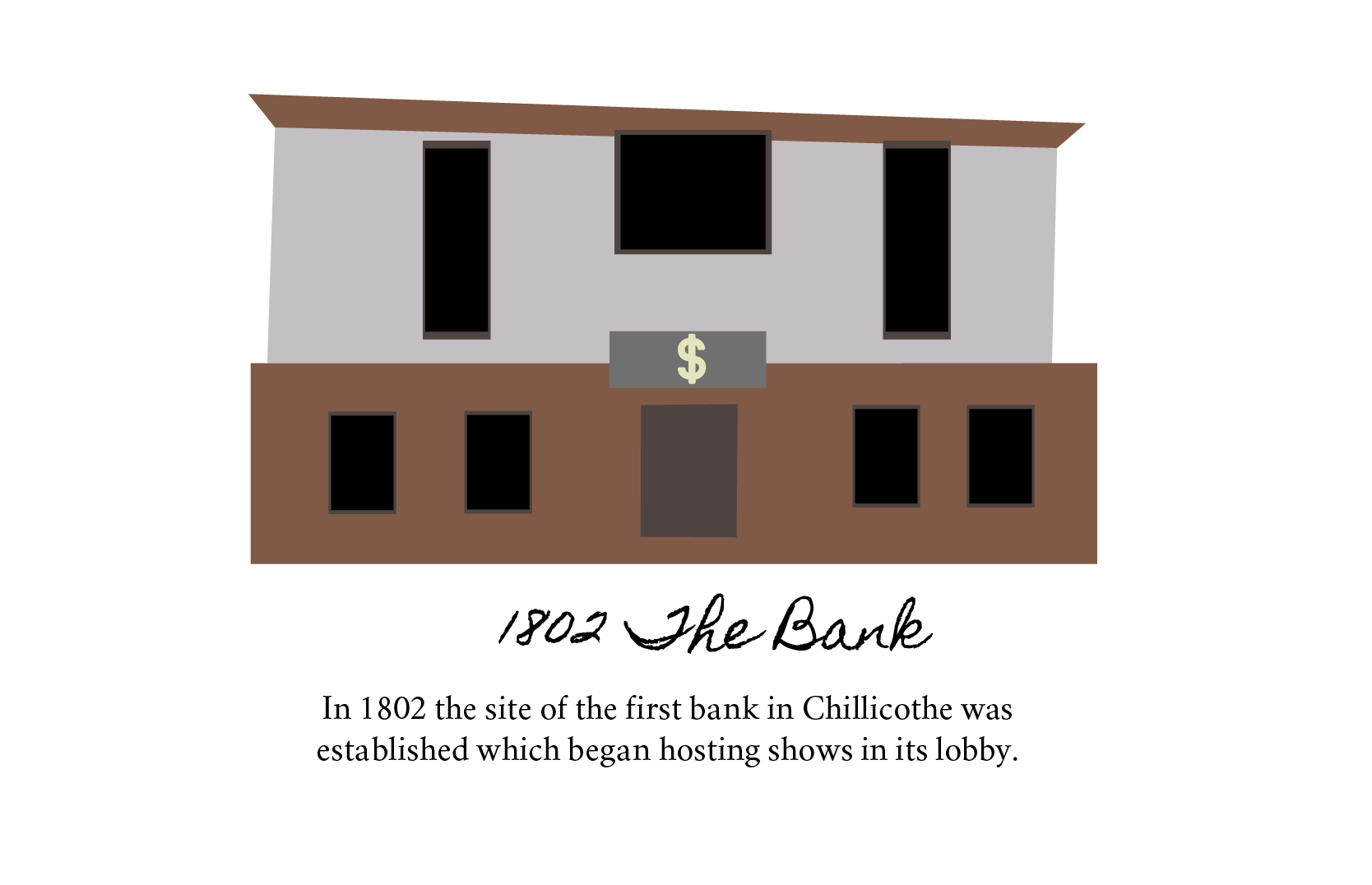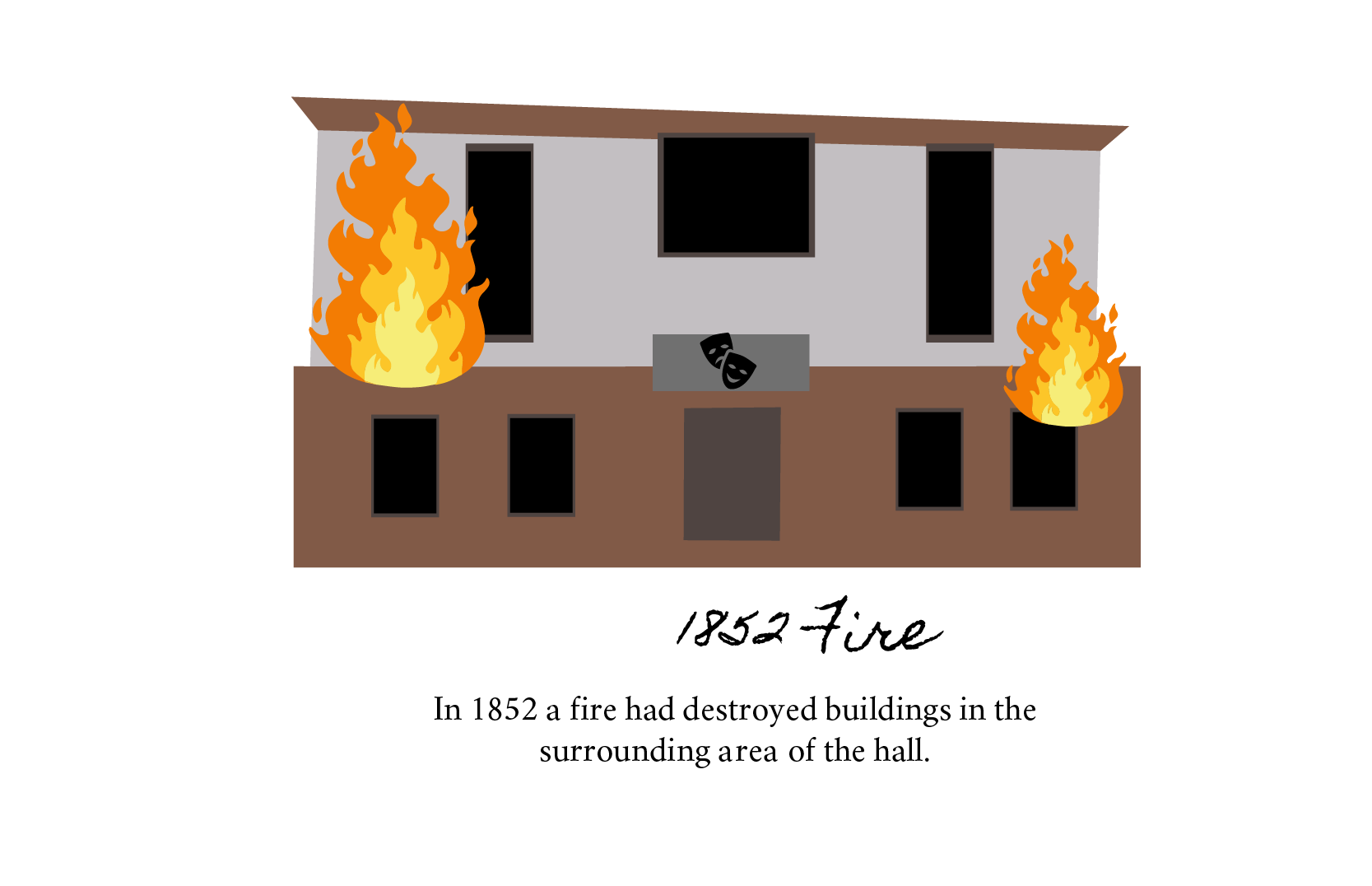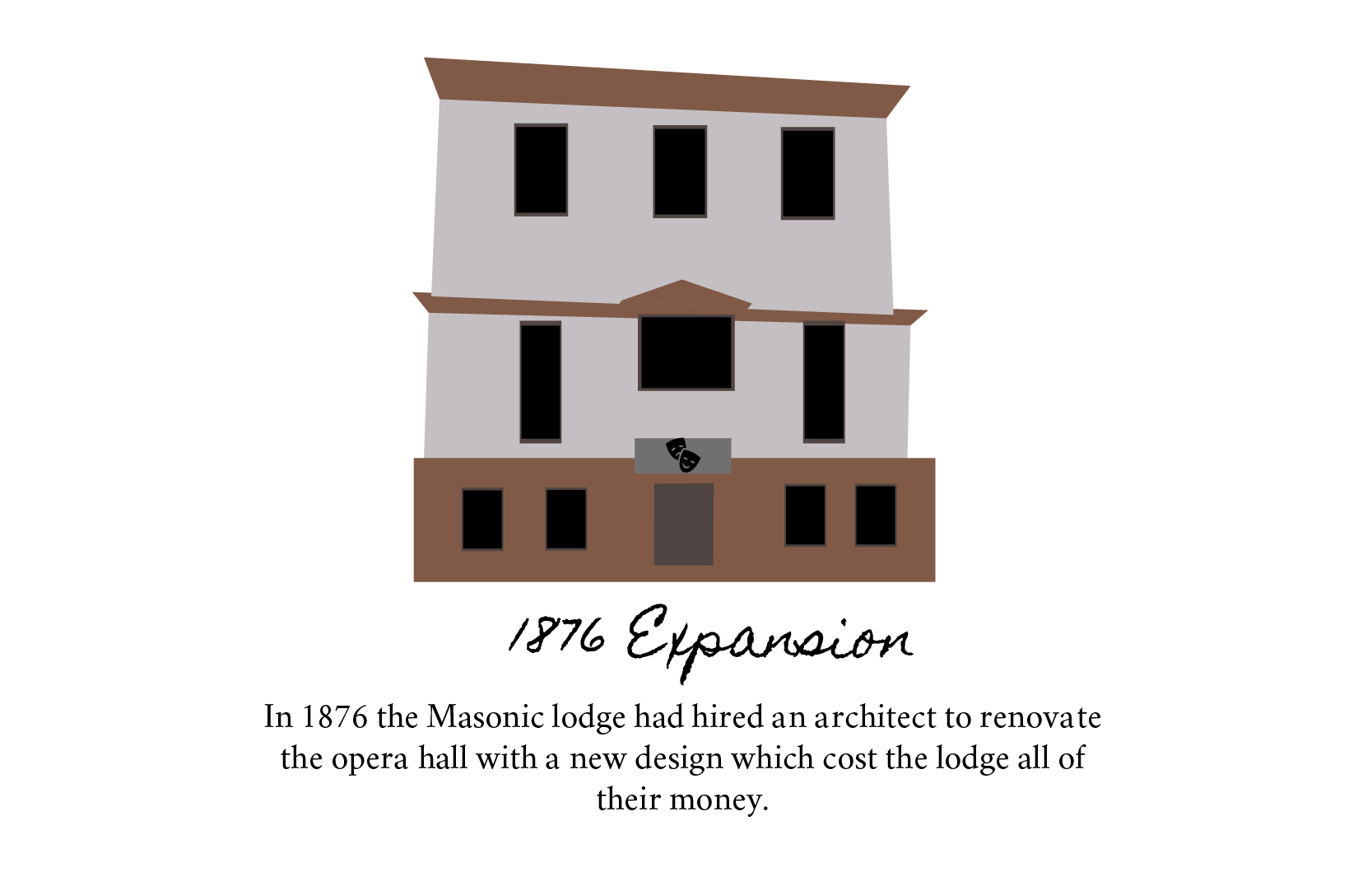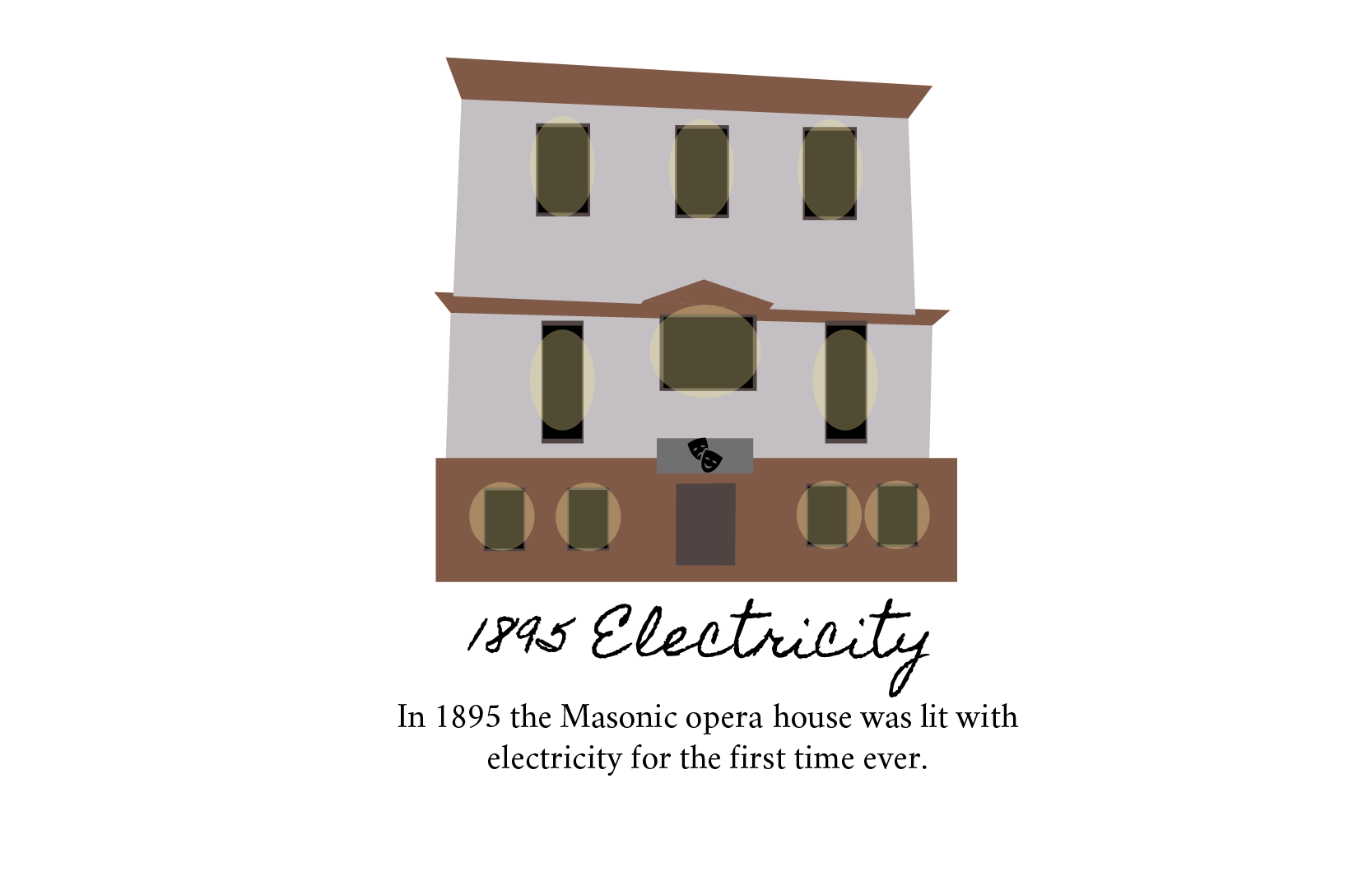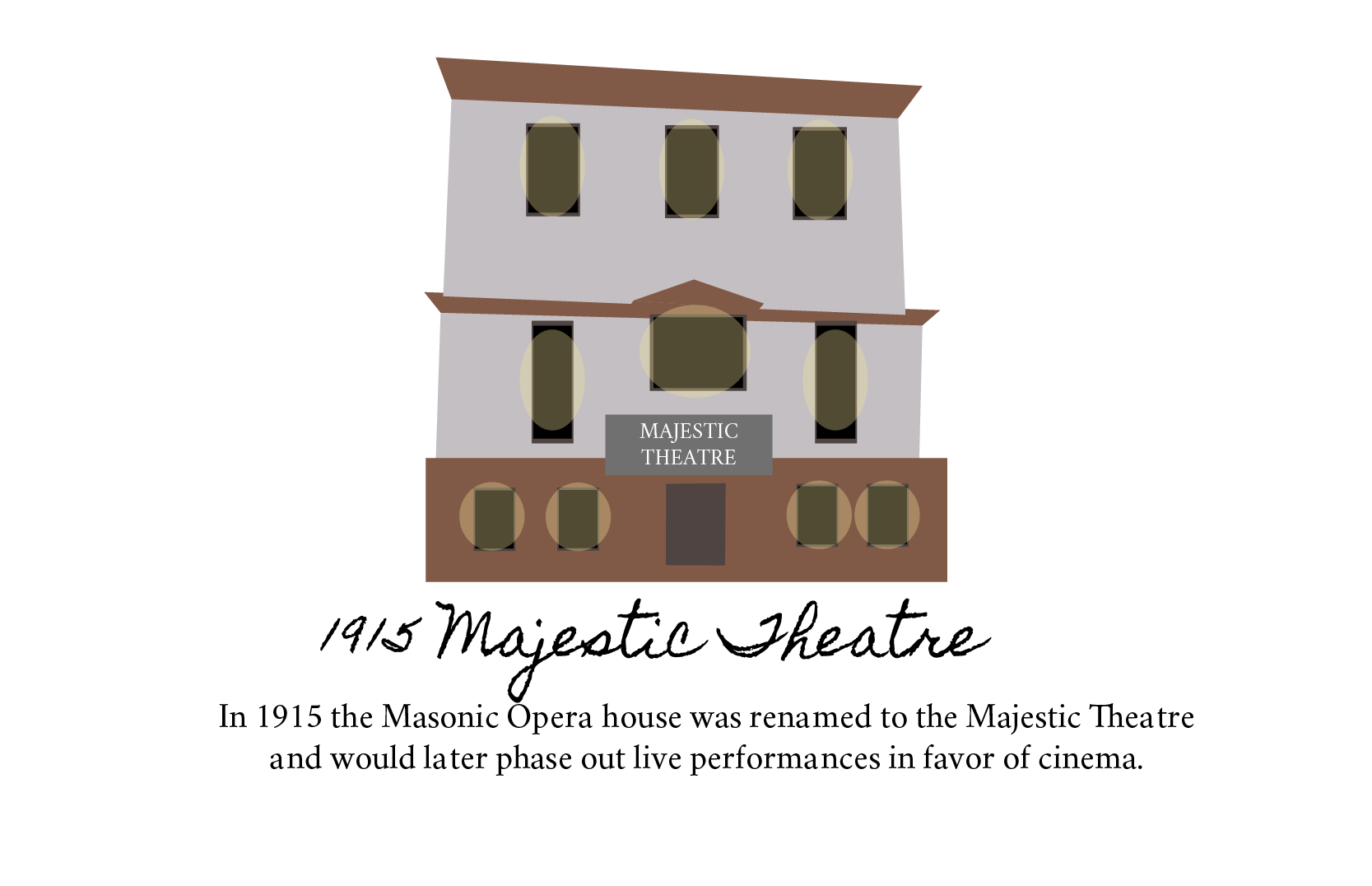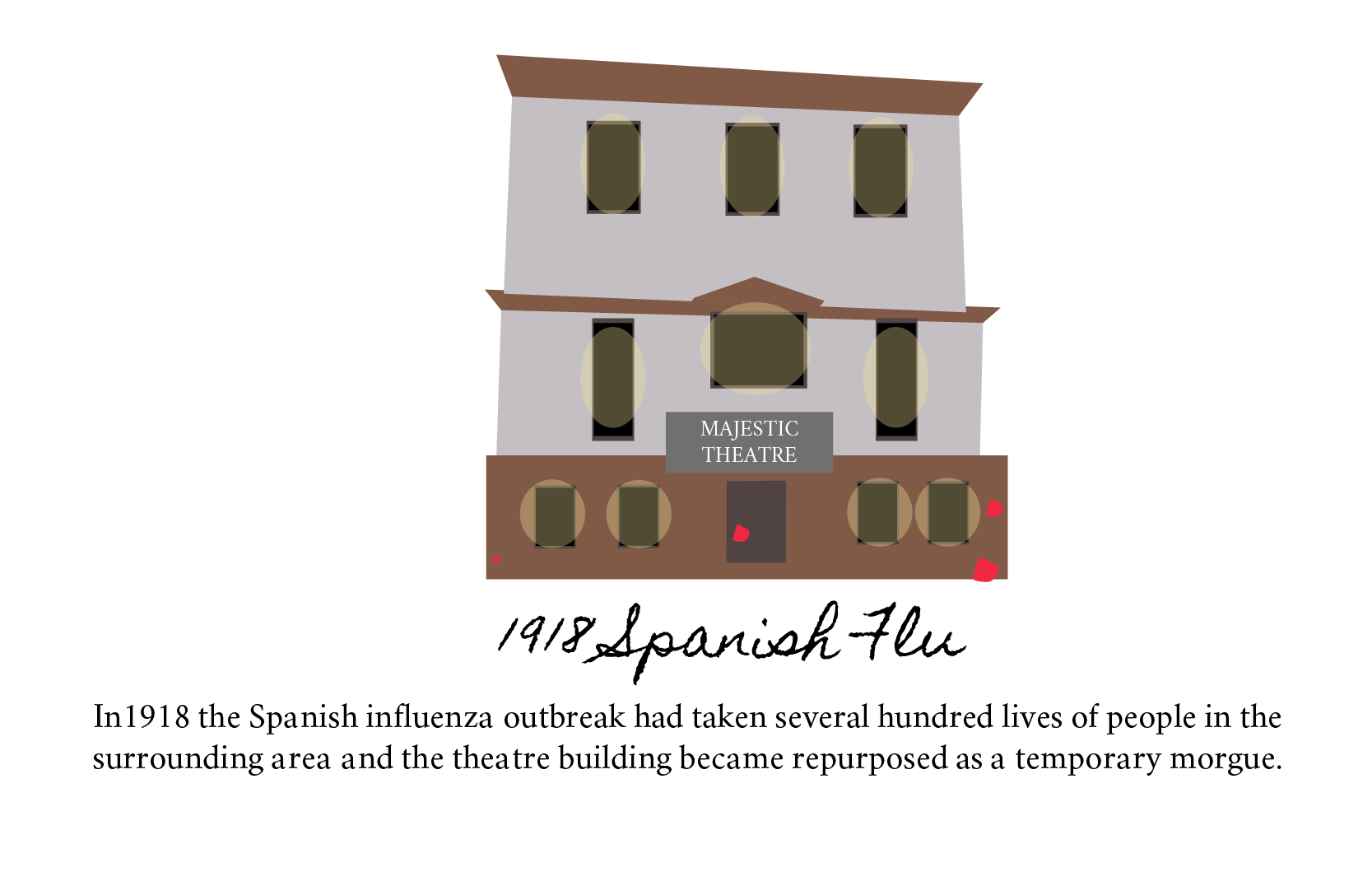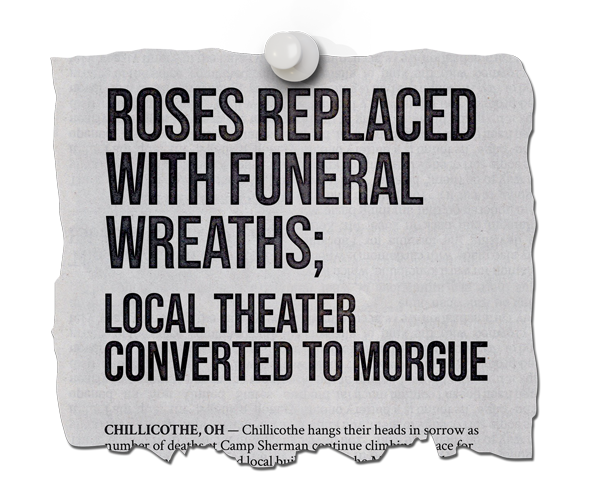
If you travel to East Second Street in Chillicothe, Ohio you’ll see a black arch with a lit sign that reads “Majestic”. Next to it, you’ll see a building with stained glass windows and a marquee advertising its latest events. A building that has witnessed the passage of the last 160 years and played a key role in one of the city’s most tragic events. This building is the Majestic Theatre.
In Patricia Fife Medert’s book titled Second Street Chillicothe, Ohio Its Buildings & Its People, you’ll find a detailed description of the history of the building on East Second Street. Built in January of 1809 the space began as the Bank of Chillicothe. Throughout the years, the building switched hands many times and became many things. What was a bank turned into a space that came to house Roscoe’s School for Accounting, the International Order of Odd Fellows, and even Baptist and Methodist church services.
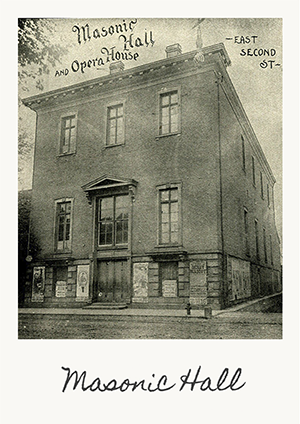
Promotional poster of the Masonic Opera House Hall in 1930 a few years after it what the first bank of Chillicothe. Posters can be seen on te building promoting musical performances at the time. Image courtesy of the Ross County Historical Society.
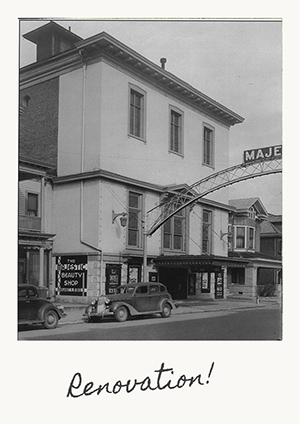
Achival image taken from a community brouchure of the latest renovation at the time in 1989. This was decades after the Spanish Flu incident where the community had begun to become revitlized again. Image courtesy of the Ross County Historical Society.
In 1852, the original building was lost to a fire and plans were made to rebuild the space into a grand hall. Construction commenced and by 1854, the building was finally completed. Theatrical and musical performances were held here and became known as the Masonic Opera House. It wasn’t until 1915 that the building became known as the Majestic Theatre, and no more than two years later did the building experience its involvement in one of the city’s most devastating events
In 1918, Chillicothe’s military training base, Camp Sherman, was hit hard with the Spanish Influenza. The death toll climbed higher every day and the Camp ran out of space to take care of the dead. With no other alternative, many local buildings ended up being used as temporary morgues, including the Majestic Theatre.
“[The Majestic] actually became a temporary morgue. So, in the dressing rooms downstairs…they would actually have bodies stacked like cordwood,” said Gene Betts, a board member for the Majestic and volunteer since 2000. In another of Medert’s books titled Chillicothe, Ohio and the Great War 1914-1918, she writes that the theater’s seats “were removed to make room for the coffins”. The stage of the theater was used for the embalming process. Part of this process included draining the blood from the body and in this case, the blood was drained into what was known then as “Bank Alley”. After this tragic event, it would become known as “Blood Alley.”
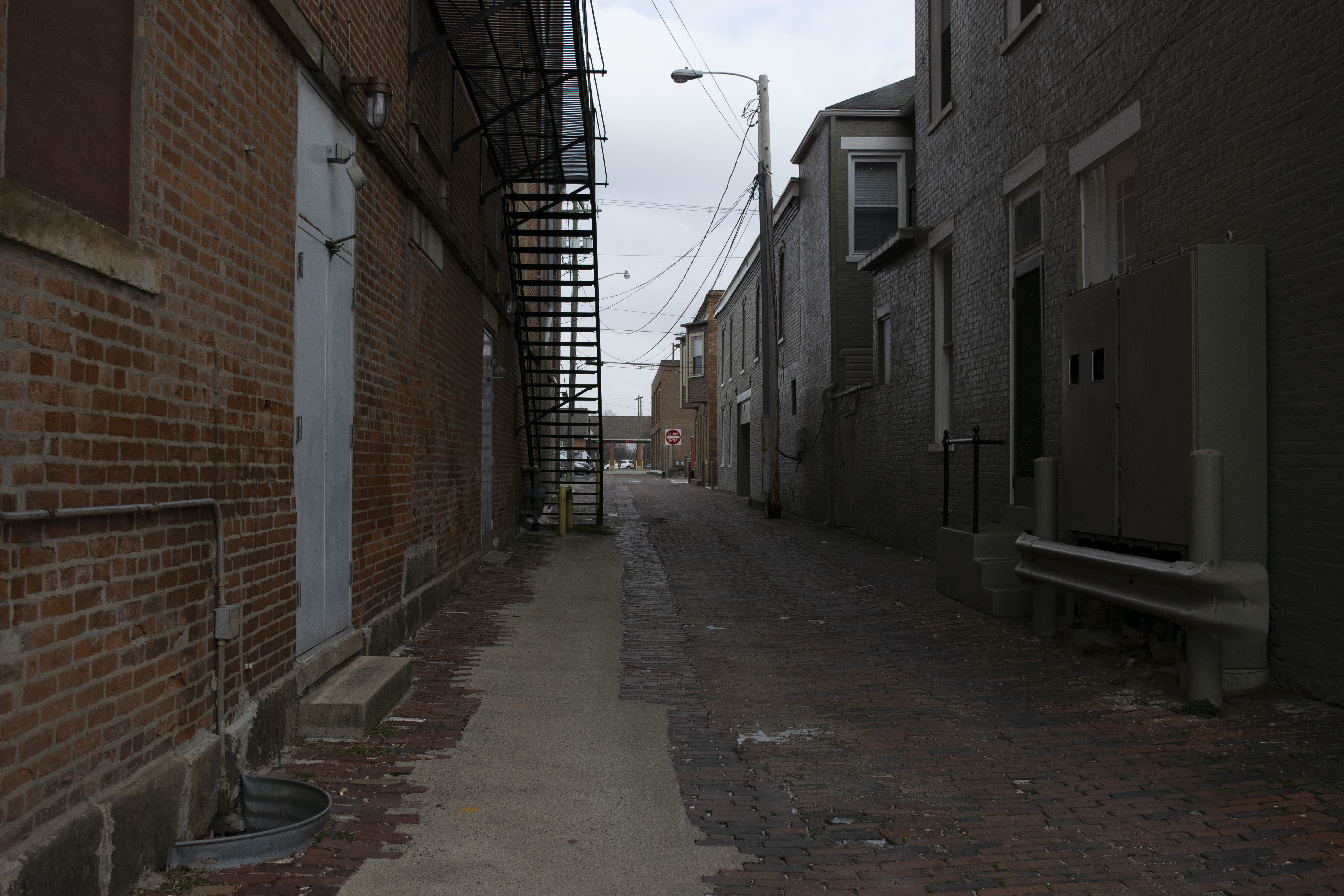
Photo of "Blood Alley" the area right beside the Majestic Theatre where the blood from the dead was drained from the excessive amount of corpses that were stored in the building from the Spanish Flu pandemic that occured around 1918.This Alley once flowed red with the blood of those who fell victim which gave the alley its name. Photo by Kaleigh Bowen.
Along with the theater’s other reported paranormal instances, such as clapping from a supposedly empty balcony and the feeling of an unwelcoming presence in the dressing rooms, reports have been made of being able to see the ghost of a soldier lying on the stage. However, neither these reports nor the building’s past have deterred visitors to the theater. “I haven’t come across anybody that’s creeped out by it,” said Betts. “It is definitely an intrigue of the building, so I think it actually helps get awareness out about the Majestic, especially when we do our ghost walks…So we’ve embraced it.” The Ghost Walk is a fundraiser that’s held once a year in Chillicothe, and the Majestic has been featured in the Walk for at least 10 of the last 15 years.
Today, the Majestic Theatre is very active, hosting many tribute band events as well as comedy nights, plays, and occasional movies and workshops. The grim role the theater played in the city’s past does not seem to bother patrons, in fact, many believe it adds to their experience. So, the next time you are in Chillicothe, stop by and enjoy one of the Majestic’s performances to experience the real history of the city, and see if you can spot or sense the paranormal.
